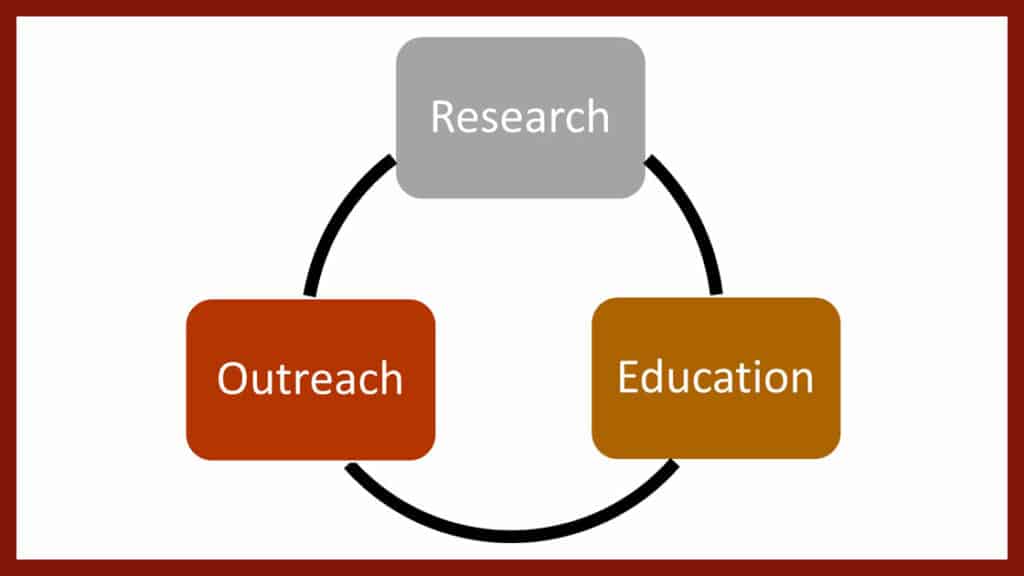The research-education-outreach cycle is sparked by hearing from other people. Each of my research projects started with someone who identified a real-world problem. If you are attending any of these events, let’s meet. My next public event is the BRC/ BRCGS Connect event in Toronto this Thursday and Friday.
Thinking back, each of my major food fraud prevention breakthroughs – including shifting my focus from ‘food counterfeiting’ to ‘food fraud’ – came from interacting with government, industry, and academic colleagues. Three key breakthroughs were refining the focus to ‘food fraud,’ applying criminology and situational crime prevention, and then using Enterprise Risk Management (ERM/COSO) to compare food fraud to all food marketplace risks. Along the way, each new idea seems to come from a discussion or trying to understand a problem.
- Refining my focus to Food Fraud: While interacting with the food industry around 2007, a leader (“MM”) said: “I’m not just worried about counterfeiting. We’ve got a wider range of problems.” Also, they stated, “I need to figure out how to manage all these problems, not just one at a time.” I said, “Well, what if our work covers all types of fraud and prevention?”
- Realizing the Root Cause is in Social Science and Criminology: Around 2009, the first person to bring the Criminology theory of Situational Crime Prevention to food fraud research in the MSU School of Criminal Justice colleague was Dr. Robyn Mace. Later, another MSU School of Criminal Justice colleague, Dr. Justin Heinonen, helped refine that focus into the SARA method and from a Victimology perspective. Later and currently, Dr. Roy Fenoff is my key criminology colleague.
- Learning about Enterprise Risk Management/ COSO to define ‘how much is enough’: Around 2007, at two breakfast meetings, I complained about being unable to explain the food fraud problem concerning other company risks. An academic college (“CS”) and an industry chief risk officer (“AP”) recommended considering ERM/ COSO.
So, you can see that ‘outreach’ has been critical, and I keep traveling, presenting, and talking to people.
I recently attended the Global Food Safety Initiative Annual Meeting (Atlanta, April 24 to 26, 2023) and presented at the Food Safety Summit (Rosemont/Chicago, May 8 to 11, 2023). My next presentations are:
Conference Presentation Schedule
- June 15
- BRC/ BRCGS Connect Conference, Food Fraud Prevention: Maintaining the Same Quality & Understanding Risks, Toronto, June 15, 2023, at 2:30 pm, URL: https://www.brcgs.com/events/brcgs-connect/
- July 16
- IAFP – International Association for Food Protection, Chair’s Opening Remarks & Overview of the Food Fraud Prevention Professional Development Group (PDG), Toronto, July 16, 2023, at 1 pm, Toronto, URL: https://www.foodprotection.org/annualmeeting/
- August 28
- AOAC – Association of Official Analytical Chemists, Keynote Speaker & Food Fraud Prevention Development as a Roadmap for AOAC Expanding Innovation, New Orleans, August 28, 2023, at 8:30 am, URL: https://www.aoac.org/2023-annual-meeting-exposition/
Food Fraud Prevention Group Meeting
I would love to meet up if you are attending any of these meetings. If we don’t set up one-on-one sessions, let’s have a group meeting at 5 pm the afternoon after each of my presentations. The location can be at the front of the main exhibition hall. It would be great for a group of us to have a food fraud prevention discussion.
Takeaway Points
- Food fraud prevention is constantly evolving and growing. Conferences and meetings are a great way to stay tuned to the details.
- The food fraud researchers must seek “outreach” opportunities to attend and present at conferences and meetings.
- If you are attending BRCGS, IAFP, or AOAC – please reach out so we can meet.

